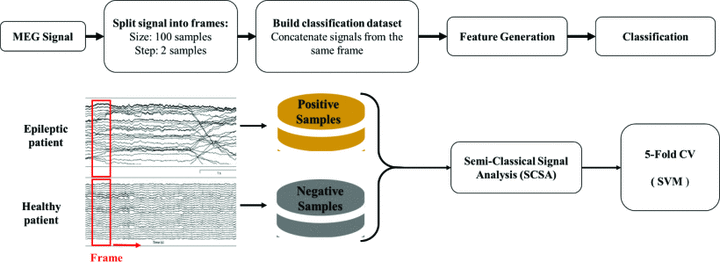 The framework of proposed method for MEG signals
The framework of proposed method for MEG signalsAbstract
Epilepsy is a neurological disorder classified as the second most serious neurological disease known to humanity, after stroke. Magnetoencephalography (MEG) is performed to localize the epileptogenic zone in the brain. However, the detection of epileptic spikes requires the visual assessment of long MEG recordings. This task is time-consuming and might lead to wrong decisions. Therefore, the introduction of effective machine learning algorithms for the quick and accurate epileptic spikes detection from MEG recordings would improve the clinical diagnosis of the disease. The efficiency of machine learning based algorithms requires a good characterization of the signal by extracting pertinent features. In this paper, we propose new sets of features for MEG signals. These features are based on a Semi-Classical Signal Analysis (SCSA) method, which allows a good characterization of peak shaped signals. Moreover, this method improves the spike detection accuracy and reduces the feature vector size. We could achieve up to 93.68% and 95.08% in average sensitivity and specificity, respectively. We used the 5-folds cross-validation applied to a balanced dataset of 3104 frames, extracted from eight healthy and eight epileptic subjects with a frame size of 100 samples with a step size of 2 samples, using Random Forest (RF) classifier.